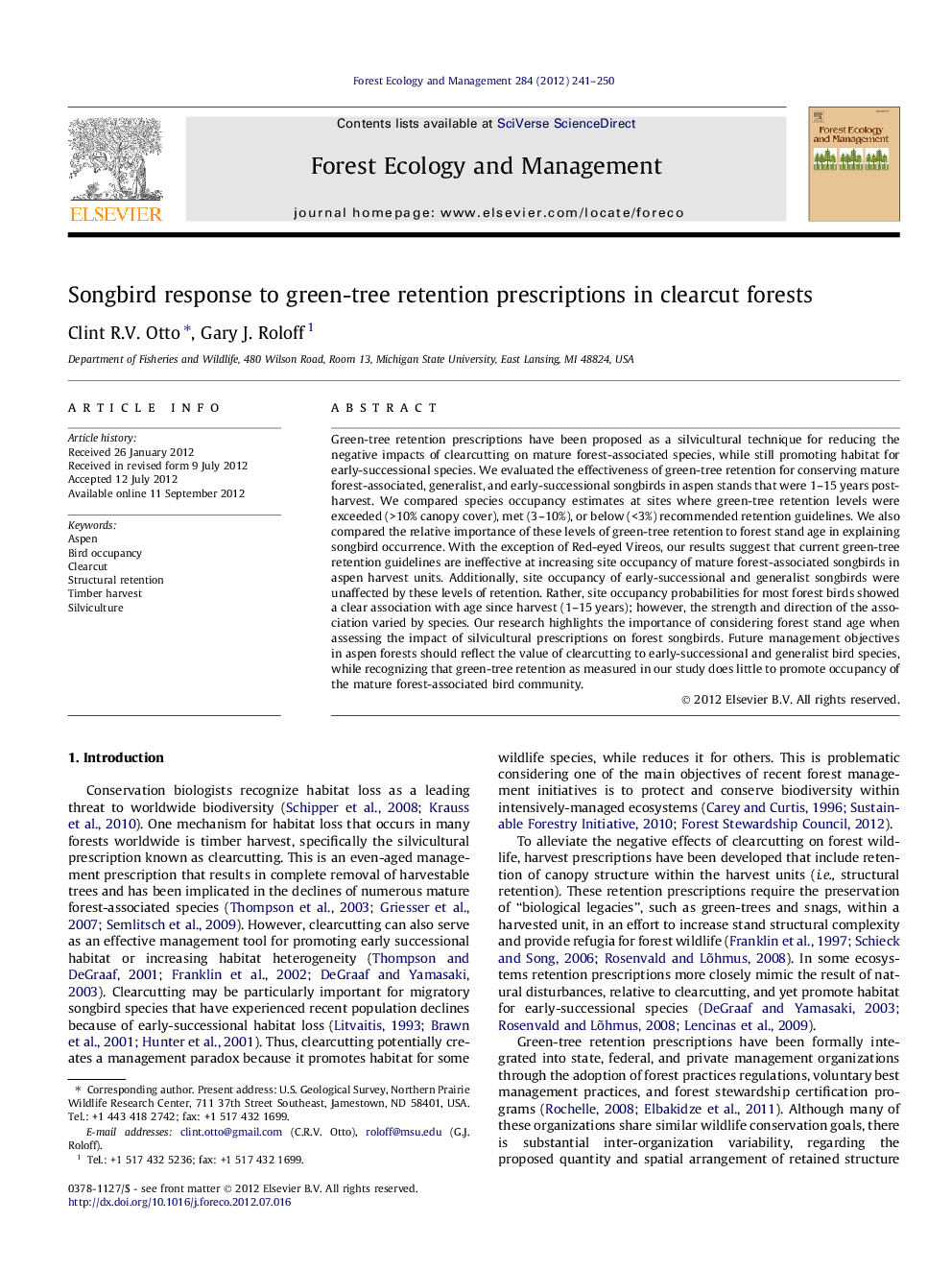| Article ID | Journal | Published Year | Pages | File Type |
|---|---|---|---|---|
| 87284 | Forest Ecology and Management | 2012 | 10 Pages |
Green-tree retention prescriptions have been proposed as a silvicultural technique for reducing the negative impacts of clearcutting on mature forest-associated species, while still promoting habitat for early-successional species. We evaluated the effectiveness of green-tree retention for conserving mature forest-associated, generalist, and early-successional songbirds in aspen stands that were 1–15 years post-harvest. We compared species occupancy estimates at sites where green-tree retention levels were exceeded (>10% canopy cover), met (3–10%), or below (<3%) recommended retention guidelines. We also compared the relative importance of these levels of green-tree retention to forest stand age in explaining songbird occurrence. With the exception of Red-eyed Vireos, our results suggest that current green-tree retention guidelines are ineffective at increasing site occupancy of mature forest-associated songbirds in aspen harvest units. Additionally, site occupancy of early-successional and generalist songbirds were unaffected by these levels of retention. Rather, site occupancy probabilities for most forest birds showed a clear association with age since harvest (1–15 years); however, the strength and direction of the association varied by species. Our research highlights the importance of considering forest stand age when assessing the impact of silvicultural prescriptions on forest songbirds. Future management objectives in aspen forests should reflect the value of clearcutting to early-successional and generalist bird species, while recognizing that green-tree retention as measured in our study does little to promote occupancy of the mature forest-associated bird community.
► Green-tree retention provides little observed benefit to interior forest birds. ► Clearcutting promotes occupancy of early-successional and generalist birds. ► Accounting for detection probability is important in wildlife–forestry research. ► Stand age should be considered when assessing the impact of retention on songbirds.
